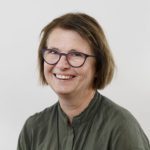An in vitro method for studying the proliferation and differentiation of Atlantic salmon preadipocytes
Publikasjonsdetaljer
Tidsskrift : Lipids , vol. 38 , p. 289–296 , 2003
Internasjonale standardnummer
:
Trykt
:
0024-4201
Elektronisk
:
1558-9307
Publikasjonstype : Vitenskapelig artikkel
Sak : 3
Lenker
:
DOI
:
doi.org/10.1007/s11745-003-106...
Har du spørsmål om noe vedrørende publikasjonen, kan du kontakte Nofimas bibliotekleder.
Kjetil Aune
Bibliotekleder
kjetil.aune@nofima.no
Sammendrag
The aim of the present study was to develop a cell culture system for studying the proliferation and differentiation of preadipocytes isolated from Atlantic salmon adipose tissue. The expression of proliferating cell nuclear antigen (PCNA) was used as a marker for cell proliferation. The cells started to proliferate within 48 h after seeding and continued to proliferate throughout the culture period of 2 wk. Undifferentiated preadipocytes showed a fibroblast-like morphology with a homogeneous cytoplasm devoid of lipid droplets. At confluence, an exogenous lipid mixture was added to the cell cultures. The preadipocytes became larger and rounder during the subsequent days, and the cytoplasm gradually filled with lipid-rich droplets. These droplets were revealed by oil red O staining. Immunocytochemical staining showed that differentiated adipocytes expressed detectable levels of the three regulatory proteins associated with adipocyte differentiation: peroxisome proliferator-activated receptor gamma (PPARgamma), CCAAT/enhancer binding protein a (C/EBPalpha), and leptin. The cells also showed activity of glycerol-3-phosphate dehydrogenase (GPDH) (EC 1.1.1.8), a biochemical marker of adipocyte differentiation. The morphological and biochemical data presented here show that fish preadipocytes have properties that are similar to those of preadipocytes in mammals. We conclude therefore that salmon adipose tissue contains a sizable population of preadipocytes. Exogenous lipids promote the activation of adipose-related genes and induce the differentiation of fish preadipocytes in vitro.
